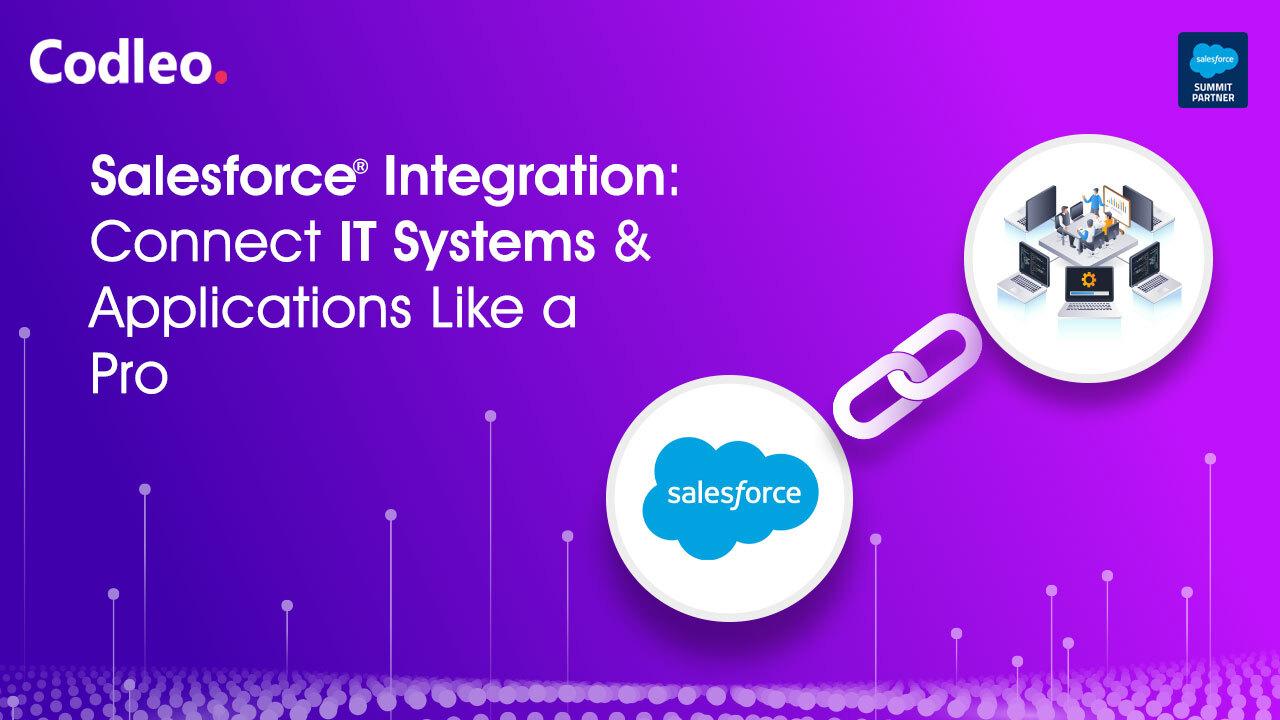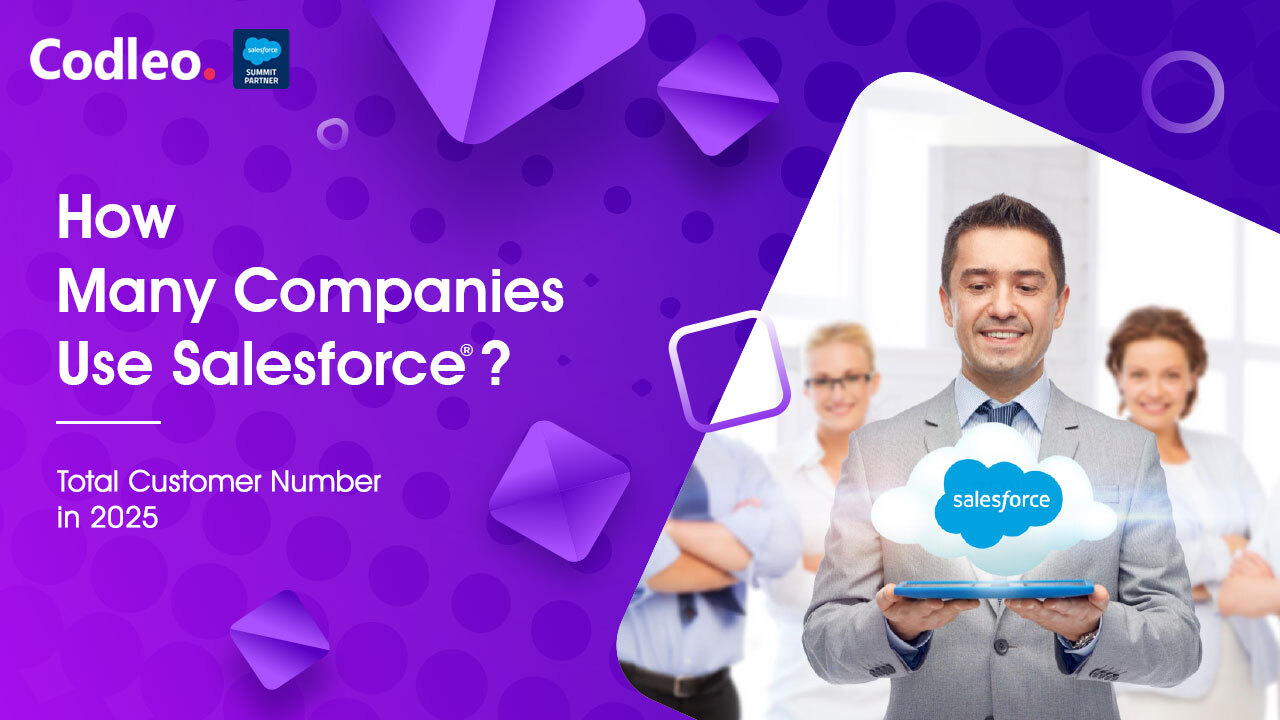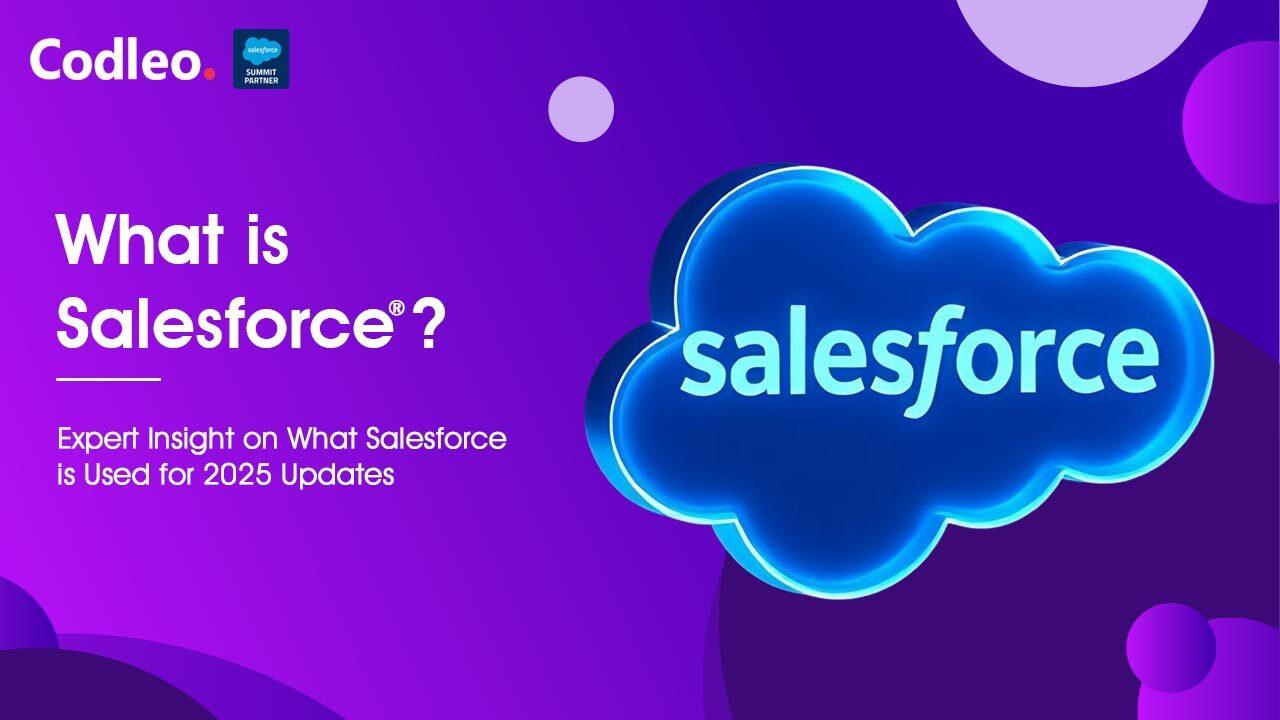Publish date:
Salesforce integration allows companies to connect and manage essential business processes on one platform. More than 4,000 apps and add-ons are available on AppExchange for installation and integration with your organization.
Many tools need expert services to connect with Salesforce or to create custom solutions that help different systems work together.
Discover how to connect your systems with Salesforce and find the top 5 Salesforce integrations we recommend.
To understand Salesforce integration, let's start with IT system integrations.
What is IT System Integration?
IT system integration connects data, applications, and devices within your organization. It helps different parts of your IT work together effectively.
-
Enterprise application integration,
-
System integration,
-
Data integration,
-
Cloud-based integration.
What is Enterprise Application Integration
Enterprise application integration (EAI) involves connecting different software and computer systems, such as ERP, CRM, and business intelligence applications. This process helps these systems work together effectively.
Application integration helps different applications work together.
With application integration, you can:
-
Keep copies of data separate and consistent.
-
Coordinate the combined flow of several activities.
-
Give users access to data and features from one user interface or application service.
What is an example of application integration?
You can connect applications in three ways: by moving data once, syncing data both ways or processing data as needed.
Enterprise application integration (EAI) combines services and technologies to share important information across apps and IT systems. You can connect enterprise applications using several methods:
-
On-premise application integration,
-
SaaS application integration,
-
Application-to-application integration.
What are the types of application integration?
There are 4 common types of application integration:
-
Presentation-level integration uses software to collect and organize data. This software acts as a bridge between different systems.
-
Business process integration connects workflows to local and cloud servers through individual applications.
-
Data integration shares information between apps and usually needs coding.
-
The communications-level integration method combines data and business process integration using Application Programming Interfaces (APIs). APIs help connect different solutions.
You can integrate apps using different methods, such as hub-and-spoke, point-to-point, or an Enterprise Service Bus (ESB).
What is System Integration?
System integration connects different computer networks, applications, and databases into one system, helping to unite various business activities.
What is Data Integration?
Data integration means combining different data sources to access them through a single view.
What is Cloud-based Integration?
Cloud-based integration connects different systems through a cloud service. It combines data, services, processes, and applications to work together effectively.
Why is System Integration Important?
IT system integration helps all systems work together smoothly. This leads to greater productivity, lower costs, and better customer service.
IT integration connects different systems and adds value by providing new functions.
What are the 5 System Integration Methods?
It automatically shares information between different subsystems. According to Wikipedia, you can connect systems using five standard integration methods:
-
Horizontal integration or Enterprise Service Bus (ESB),
-
Vertical integration,
-
Star integration,
-
Industrial lifecycle integration,
-
A standard data format.
More about system integration methods learn here.
Our Salesforce consultants offer system integration services of different types and levels of complexity. With 10 years of experience in the CRM market, we can create a custom integration plan that meets your specific business needs.
Our professionals can provide Salesforce integration tutorials for your organization and teams.
What Is a System Integrator?
A systems integrator is a company or person who specializes in integrating different subsystems into one complete system and ensuring that it works smoothly.
What are the Significant Aspects to Consider System Integrations
When creating a tour IT integration strategy, consider these essential aspects:
-
Set goals for integrations.
-
Explore the available tools and technologies for system integration.
-
Talk to a system integration engineer.
-
Check data for gaps and mistakes.
-
Conduct a data-mapping exercise.
-
Remove duplicates and clean the data.
-
Create rules to check for accuracy.
-
Examine the current system connections and structure.
-
Consider additional ways to make improvements.
What is Integration in Salesforce?
Connecting Salesforce with other CRM systems makes using and sharing data across different applications easier. This integration helps create a central place for users to access everything they need. By linking the features and data in your Salesforce account, you can streamline essential processes within the platforms.
Why is Salesforce Integration Important?
According to a Salesforce study, Integrating Salesforce helps keep data consistent and boosts productivity and operational quality by 37%. It speeds up information sharing and cuts operational costs by 30%.
By improving communication between different systems, you can access all necessary data quickly and obtain a complete view of customer information.
Salesforce Integration Limitations
While Salesforce can connect many IT systems, not all integration tools are identical. They vary in programming languages, how they store data, and whether they are meant for general or technical users.
Some Salesforce integration tools are easy to set up and use. They are part of standard Salesforce integration and usually have ready-made templates to simplify the process. Other tools can be more complex and may require some technical knowledge to use.
9 Steps to Perfect Salesforce Integration
Where should you begin if you've decided to manage your integration project?
Step #1. Put Together a Salesforce Integration Project Plan
Ensure that your Salesforce integration supports your business goals, solves problems, and provides more benefits than drawbacks. List the primary needs for the integrations, such as flexibility, scalability, and ease of use.
Step #2. Set Resources and Budget
After setting your goals and expectations, determine what type of integration you can manage based on your skills, resources, and budget.
Step #3. Find an Experienced Salesforce Integration Consultant
If your team lacks experience connecting CRM systems with other tools, consider hiring a Salesforce expert. They can help you identify potential integration and maintenance issues, estimate support costs, and suggest ways to improve the solution.
Salesforce consultants can help you prepare your data for system synchronization. They can also explain how your chosen integration solution works and how to set it up.
Step #4. Decide on Salesforce Integration Types
There are 7 common integration types:
App-Based Integration
This option is great for Salesforce integration projects that require minimal installation, setup, configuration, and maintenance work.
The most critical and time-consuming part of this type of integration is preparation.
You need to research the app's compatibility and system requirements for integration. Check the API limits and ensure this software won’t disrupt your Salesforce setup. It should also not conflict with other apps, plug-ins, and systems you have integrated.
Code-Based Integration
This approach is best for advanced projects that need custom integrations to ensure they fully meet system requirements and work with different API versions. This option usually takes longer to finish and may require outside assistance.
A significant drawback of this type of integration is that it needs expert help for support and maintenance every time there is a Salesforce release.
User Interface Integration
This type of integration allows users to access multiple apps from one platform and use them as a single system.
Press Button Integration
During this integration, data transfers occur from one system to another when the other system is activated. This activation can happen by clicking a button or selecting an option from a menu.
Business Processes Integration
This option may use Apex web services to manage business tasks across different applications and complete the overall business process.
Salesforce Data Integration
This method allows data to sync using SOAP and REST APIs. It lets one app in an organization serve as the primary source for a specific business object. This integration usually doesn’t require coding but can't include any custom logic.
Salesforce Security Integration
This type of system integrates all the ways to log in, making it easier for users and reducing management tasks.
Step #5. Choose a System Integration Solution
In addition to the abovementioned types, you can connect systems and apps using various integration solutions.
-
Salesforce Connect (Lightning Connect),
-
Salesforce App Cloud (Force.com),
-
Ready-to-use integration apps on AppExchange.
Salesforce Connect
Salesforce Connect is a great tool for connecting Salesforce with ERP systems, other CRM software, and marketing automation tools. It allows you to access large amounts of data without having to copy it into Salesforce. Its simple point-and-click interface makes it easy to set it up.
This integration approach focuses only on Salesforce and requires system integration support for the Open Data Protocol. If the systems you choose do not support the Open Data Protocol, you must create a custom adapter using the Apex Connector Framework.
Salesforce App Cloud
This platform allows you to build custom apps that connect with external data sources. You don’t need advanced IT skills to develop these apps. You can use Force.com APIs and tools like Force.com, Canvas, and Heroku. The Process Builder also offers drag-and-drop components to make the process easier. This means an in-house IT team can handle app development.
You can automatically and safely test and upgrade these apps without complex changes. However, if you build your solution on App Cloud, you must use AppExchange partner's apps. This can lead to higher costs and a more complicated integration process.
AppExchange Apps
AppExchange is a marketplace for Salesforce apps and software from partner companies. You can find a variety of tools that are either free or paid. Some apps are ready to install, while others might need extra setup. You can customize these tools using App Cloud developer tools or use them as a starting point for more complex solutions.
Each app on AppExchange complies with a security standard, so you should not worry about your company’s data protection.
AppExchange apps are designed for specific integrations. If your integration needs are more complex, you should look for different apps for each integration.
Step #6. Know Your Integration Limits
Before starting an integration project, check your current system for limits, weaknesses, and areas that need improvement. You can do this by working with a Salesforce consulting partner, who will assess the health of your Org and decide how ready it is for integration.
Next, evaluate your app limits, requirements, compatibility with different Salesforce editions, and scalability.
Step #7. Prepare and Manage Your Data
To ensure your tool shows accurate and current information, keep your data clean, free of duplicates, and regularly updated in your Salesforce CRM. Decide who will check the data for errors and how often they will do this.
Step #8. Select an Integration Pattern
Choose the best way to integrate technology by comparing two standard methods: direct and server-based.
Direct Integration
Direct integration means connecting Salesforce directly to another system using an API or database. While this method may seem limited, it effectively allows two-way data exchange between the systems. This approach works well for smaller projects.
Server-based Integration
Server-based integration is a flexible solution that reduces the need for IT support, minimizes the impact of system updates on the integration, and gives you better control over data movement.
This approach uses models like hub-and-spoke and enterprise service bus (ESB), which can be hosted in the cloud or local systems. Server-based integration is suitable for small and larger projects involving many systems and a lot of data flow.
You need to choose how you will implement your solution:
-
One tool at a time,
-
Bulk integration by segments like connecting only sales-oriented software or marketing-oriented software,
-
Use priority,
-
Integration difficulty.
Step #9. Consider Solution Support and Maintenance
Whether you use an app or write your code, you must update your software to keep up with your growing Salesforce platform. Make sure to upgrade it and fix any issues if required.
Choose someone from your team to monitor this task. If needed, ask Salesforce administrators for help.
If you need help with Salesforce integration, our consultants can create a plan just for you. We start by assessing your business needs and reviewing your current Salesforce setup. Then, we provide solutions and offer ongoing support.
If our current software options don’t meet your business needs, we can create a custom Salesforce solution and link it to your platform. Share your ideas with us to get the most out of your Salesforce investment.
What Integrations with CRM Are Needed?
The basic business integrations you need to link your CRM with are:
-
Email marketing tools,
-
Sales automation solutions,
-
Business intelligence apps,
-
Accounting systems,
-
Marketing automation tools,
-
Helpdesk solutions,
-
Social media apps,
-
Scheduling app/calendar,
-
Computer telephony systems.
Bonus: Top 4 Salesforce App Integrations
Mailchimp Salesforce Integration
Over 15 million people use MailChimp to create, send, and track email marketing campaigns. The MailChimp and Salesforce integration lets you see and manage your campaigns and subscriber lists from the Salesforce platform. You can also import contacts from Salesforce to MailChimp, create custom queries, and more.
Jira Salesforce Integration
Jira is a leading tool for managing projects and tracking IT and software development issues. This platform helps your team track project progress and access essential troubleshooting cases easily.
-
You have several options to choose from when connecting Jira with Salesforce.
-
Atlassian’s marketplace and its verified vendor, ServiceRocket,
-
Third-party integrators like Zapier,
-
Other integration services on AppExchange include zAgile, Go2Group, and Workato.
ServiceRocket offers three types of Jira integrations.
-
Jira Server,
-
Jira Cloud,
-
Jira Service Desk for tracking issue tickets.
You can find Installation, User, and Administration Guides on the app pages.
Salesforce QuickBooks Integration
QuickBooks is a top accounting tool for tracking business income and expenses. It also helps prepare businesses for tax season.
Salesforce QuickBooks Integration can empower you with:
-
You need to see your business processes and identify areas for improvement.
-
Improved data sharing, such as sales orders, expenses, and invoices, between the sales and accounting teams.
-
Less duplicate data entry.,
-
Increased productivity,
-
Better information leads to more accurate predictions.
You can integrate QuickBooks via third-party tools on AppExchange like:
-
DBSync by Avankia,
-
Workato,
-
InterWeave,
-
Breadwinner,
-
Propelware,
-
Zapier.
Salesforce Slack Integration
Salesforce's new collaboration tool for Slack lets you:
-
Connect with the people and tools you work with daily,
-
Communicate in real-time between Slack and Salesforce Chatter,
-
Increase team productivity and collaboration,
-
Improve searches across platforms.
On top of it, Salesforce Slack integration enables your team:
-
Share messages both ways between Salesforce Chatter and your Slack channel,
-
Search your Salesforce solution from Slack,
-
Share results there.
You can integrate the Slack app by downloading it from the Slack App Directory or via the AppExchange listing. Check the Slack plug-in configuration instructions and the Salesforce for Slack help article for details on Salesforce integration.
Additional Salesforce Slack integration options are available on third-party platforms like:
-
Zapier,
-
Automate.io,
-
Workato.
This list of Salesforce integrations can differ for each business. You can create your favorite list from over 4,000 Salesforce apps and integration tools available on AppExchange and over 2,000 integrations on Zapier or Workato.
To find the best integration tools for Salesforce, create a clear strategy. It will help you understand which tools can enhance your Salesforce capabilities effectively.
Final Thoughts
Salesforce integration solutions let you maximize your organization's capabilities and create a seamless experience on the platform. The good news is that the most popular tools are easy to set up and require no additional coding.
The bad news is that if you want a flexible, scalable, user-friendly, and customized solution, you'll need help from technical teams. To ensure your integration project is on the right path, our expert Salesforce consultants are ready to assist you with all Salesforce integration services, such as:
-
Integration of multiple distributed systems
-
Integration with complex custom solutions
-
Consolidation of several CRM systems under Salesforce solution
-
Planning and strategizing complex integration scenarios
-
Data integration and synchronization among the systems
Contact our Salesforce support team and tell us about your integration challenges.
















